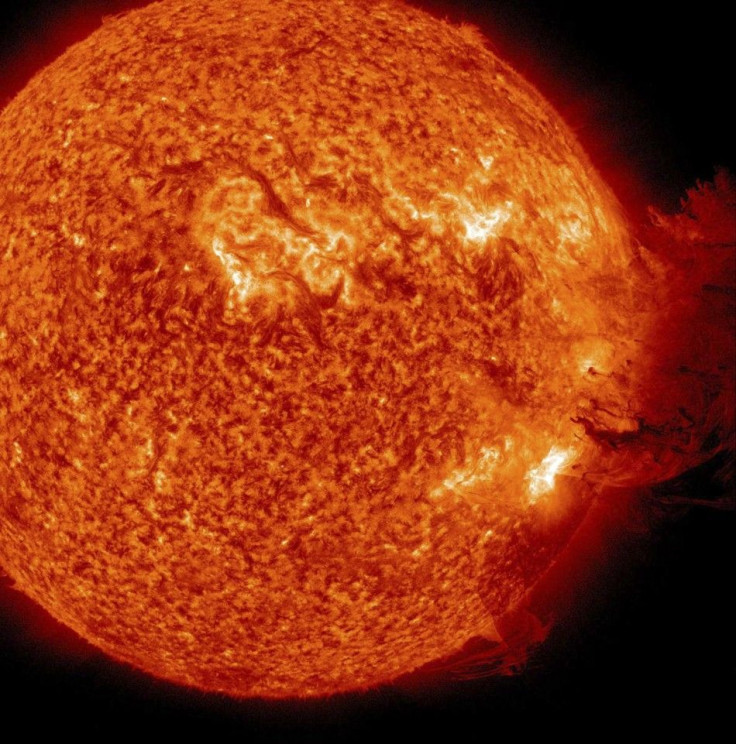Solar Storm 2012: Why Arctic Flights by Delta, Qantas, Air Canada Are Being Diverted

The 2012 solar storm may have created a spectacular show of northern lights for sky watchers, but it caused great inconvenience for airlines. They had to divert some of their flights to avoid radio disruptions.
NASA scientists have called the solar storm the biggest in six years. Delta, Qantas and Air Canada have all been diverting Arctic flights between the U.S and Asia, to avoid radiation that could potentially disrupt their radio signal.
Jets were generally sent further south on these routes, adding about 15 minutes to each journey, Delta spokesperson Anthony Black, said on Tuesday. The solar burst can impact your ability to communicate, he added.
Airlines are at risk for a loss of communications on Arctic routes because they use high-frequency radios on flights in the region instead of satellite-based systems, Doug Biesecker, a solar physicist at the National Oceanic told Bloomberg Businessweek. This one is unusual because it's so strong, the 11th-most-powerful storm measured since 1975.
According to NASA, the sun first erupted on Jan.22 sending a coronal mass ejection (CME) towards Earth. These highly energetic protons are what the solar radiation storm.
On Tuesday, NASA confirmed that the CME collided into the Earth magnetic field, brining with it an influx of particles that amplified the radiation storm. It was categorized as a strong S3 storm by NOAA's Space Weather Prediction Center.
While the storm can cause disruption to radio waves, NASA clarified that it doesn't harm humans. Biesecker warned that the sun could get more active over the years.
To me this was a wake-up call, Biesecker said. The sun is reminding us that solar max is approaching. A lot worse is in store for us. We hope that you guys are paying attention. I would say we passed with flying colors, he said in a media statement.
NASA predicts that the storm's radiation will likely continue through Wednesday and may disrupt satellite communications in some polar regions. The storm may be visible on Wednesday night at high latitudes, such as Michigan and Maine in the U.S, NASA reported. If you missed the show of lights, you can see it here:
© Copyright IBTimes 2024. All rights reserved.





















